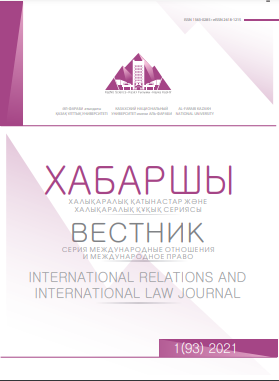The new EU strategy for Central Asia one year later: fears and wishes
DOI:
https://doi.org/10.26577/IRILJ.2021.v93.i1.06Abstract
The EU adopted a new strategy for Central Asia and that was adopted in July 2019 in Bishkek. One year later it is necessary to evaluate what is written there and if it is useful or not. Although the states of that region are very different among them, as the impact of the EU strategy, it is possible to depict a general outlook. This can be useful for the authorities in Brussels whether to reorient the strategy or to maintain the course. In the following pages, there is a description of the main goals set by the EU strategy and an analysis of the results during this strange year affected by Covid-19. Besides that, it is necessary to talk a little bit about the role played by the other main competitors at that area (China, Russia and the USA) and about the economic and political developments in the region. As a resolute, the conclusions of this research are very clear: the EU wants to promote stable political systems and Human Rights friendly as well as developed economies in its neighbourhood and beyond for security and trade reasons. Some researchers and politicians accused EU of revive the colonialism as the EU speaks about its “economic leverage” for democratisation purposes or about its normative power.
Key words: Central Asia, European Union, New Strategy, Security, Energy, Human Rights.




